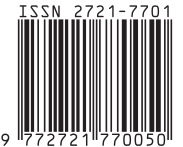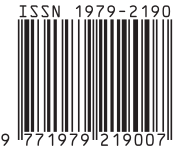Pemanfaatan Deleterious rhizobacteria Untuk Mengendalikan Gulma Utama Tanaman Padi di Kabupaten Jember
Abstract
The purpose of the study was to determine the characteristics of plant pathogens from Deleterious rhizobacteria (DRB) that have the potential as biological control agents in the main weeds of rice plants. This research was conducted in April-August 2019 at the Plant Protection Laboratory, Faculty of Agriculture, University of Jember. Rhizobacteria sampling was taken from rice fields in Mayang District. Weed sampling technique is done by purposive randomized sampling. The collections of pathogen-infected weeds are then isolated using laminar airflow and identified through several test stages. DRB exploration results obtained by two microorganisms that can be used as biological control to control the main weeds of rice plants from the Pseudomonas group, they are P. syringae pv. glycinea (M1) and P. syringae pv. syringae (M2). Based on the identification of the two isolates morphologically that (M1) has a greenish-white color with a flat edge type. Whereas the isolate code (M2) has a yellowish murky white color with a rather irregular jagged edge type. However, the two isolates have similarities in spherical shape. The physiological observations of both M1 and M2 isolate from the Catalase test, fluorescent pigments produce gram-positive (+) while gram tests produce gram-negative (-). The conclusion of this research is the characterization of P. syringae pv. glycinea (M1) and P. syringae pv. syringae (M2) both morphologically and physiologically.
- Authors retain copyright and grant the journal right of first publication with the work simultaneously licensed under a Creative Commons Attribution License that allows others to share the work with an acknowledgement of the work's authorship and initial publication in this journal.
- Authors are able to enter into separate, additional contractual arrangements for the non-exclusive distribution of the journal's published version of the work (e.g., post it to an institutional repository or publish it in a book), with an acknowledgement of its initial publication in this journal.
- Authors are permitted and encouraged to post their work online (e.g., in institutional repositories or on their website) prior to and during the submission process, as it can lead to productive exchanges, as well as earlier and greater citation of published work.







